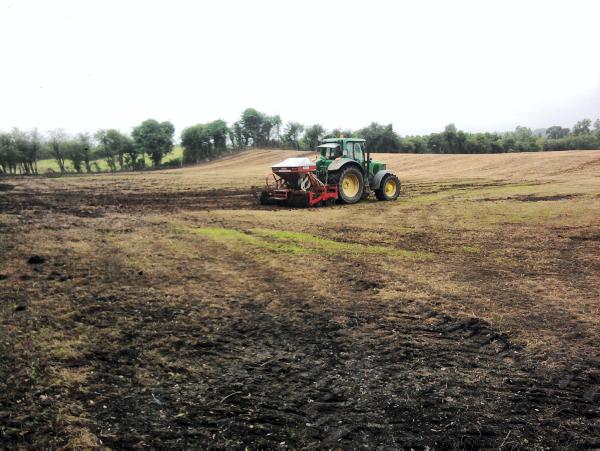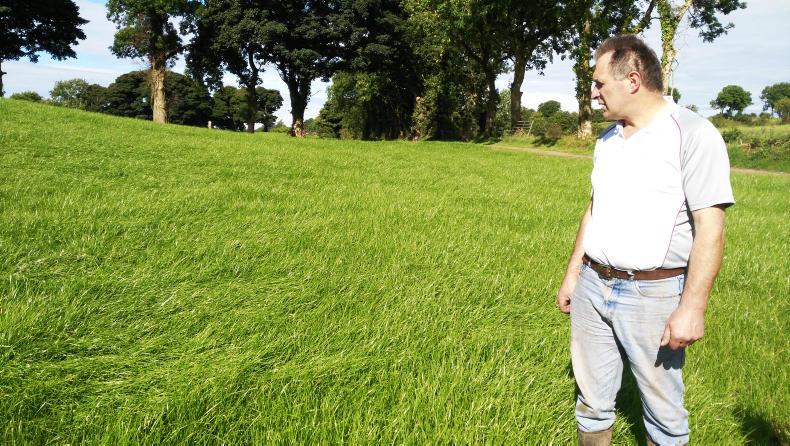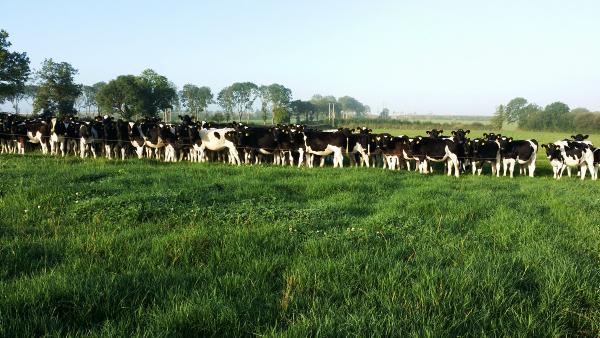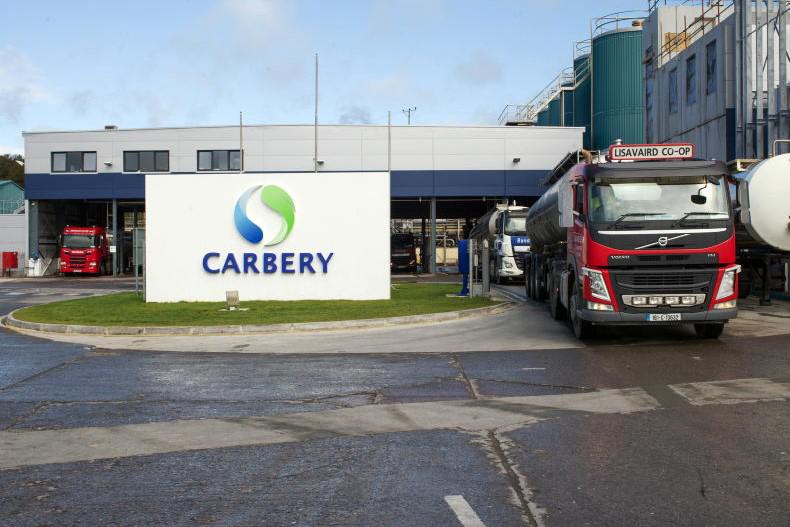In one of his most famous poems, the poet and Monaghan man Patrick Kavanagh wrote about “the stony grey soil of Monaghan” and none of us could really argue with his statement. One thing we do exceptionally well in Monaghan is stones. This is what has made my decision to direct drill all grass seed a very easy one. Apart from the labour associated with this demoralising task of stone picking, the destruction of the soil involved when ploughing is my second reason.
The soil that we farm is a very sensitive micro culture of thousands of worms, bacteria and fungi in a variety of forms. The top six inches of soil is packed full of nutrients, organic matter and humus. These all work in harmony with all three sciences involved, the physical, chemical and biological to provide animals with a quantity of grass as well as a nutritious diet. The decision to drive a plough straight through this eco system is not one to be taken lightly.
Some might argue that I should be joining Greenpeace with my environmental talk, but there are other reasons why I have decided to park the plough. Like the majority of farmers in this country, the notion of spending copious amounts of money ploughing and cultivating a field wouldn’t please me. The direct drilling method is very low cost and is an excellent incentive to reseed as the overall cost per acre is reduced in comparison to traditional methods of cultivation. Some might argue that there is a lot to go wrong with poor germination rates and a high return of old grasses among some comments made. My argument in this case, that like any other system of reseeding, management is important. Post emergence sprays and soil fertility play a big role.
I will apply a clover safe post emergence spay at the three leaf stage depending on conditions - this is usually Clovermax. I find by targeting weeds at seedlings stage leaves a very clean sward.
On the soil fertility front, I applied 150kgs per acre of 10-10-20 and 150kgs per acre of Gran-lime. Some people suggest that it works out very expensive using granulated lime against traditional lime. However, I find in this case where only a small amount is being applied and a fast result is needed it works fine. With the quality of bulk lime being so variable it has to be questioned at what cost is bulk lime working out at. Even though in most cases the Calcium content is up at 90%, the neutralising value which is the most important figure can be very low at 30% in some cases.
The grass seed was sown at a rate of 15kg per acre. It was a mix of AberGain, AberChoice and Tyrella with half a kilo of clover. I choose these varieties because they are consistent top performers with a mix of high ground cover and quantity.
In one of his most famous poems, the poet and Monaghan man Patrick Kavanagh wrote about “the stony grey soil of Monaghan” and none of us could really argue with his statement. One thing we do exceptionally well in Monaghan is stones. This is what has made my decision to direct drill all grass seed a very easy one. Apart from the labour associated with this demoralising task of stone picking, the destruction of the soil involved when ploughing is my second reason.
The soil that we farm is a very sensitive micro culture of thousands of worms, bacteria and fungi in a variety of forms. The top six inches of soil is packed full of nutrients, organic matter and humus. These all work in harmony with all three sciences involved, the physical, chemical and biological to provide animals with a quantity of grass as well as a nutritious diet. The decision to drive a plough straight through this eco system is not one to be taken lightly.
Some might argue that I should be joining Greenpeace with my environmental talk, but there are other reasons why I have decided to park the plough. Like the majority of farmers in this country, the notion of spending copious amounts of money ploughing and cultivating a field wouldn’t please me. The direct drilling method is very low cost and is an excellent incentive to reseed as the overall cost per acre is reduced in comparison to traditional methods of cultivation. Some might argue that there is a lot to go wrong with poor germination rates and a high return of old grasses among some comments made. My argument in this case, that like any other system of reseeding, management is important. Post emergence sprays and soil fertility play a big role.
I will apply a clover safe post emergence spay at the three leaf stage depending on conditions - this is usually Clovermax. I find by targeting weeds at seedlings stage leaves a very clean sward.
On the soil fertility front, I applied 150kgs per acre of 10-10-20 and 150kgs per acre of Gran-lime. Some people suggest that it works out very expensive using granulated lime against traditional lime. However, I find in this case where only a small amount is being applied and a fast result is needed it works fine. With the quality of bulk lime being so variable it has to be questioned at what cost is bulk lime working out at. Even though in most cases the Calcium content is up at 90%, the neutralising value which is the most important figure can be very low at 30% in some cases.
The grass seed was sown at a rate of 15kg per acre. It was a mix of AberGain, AberChoice and Tyrella with half a kilo of clover. I choose these varieties because they are consistent top performers with a mix of high ground cover and quantity.











SHARING OPTIONS